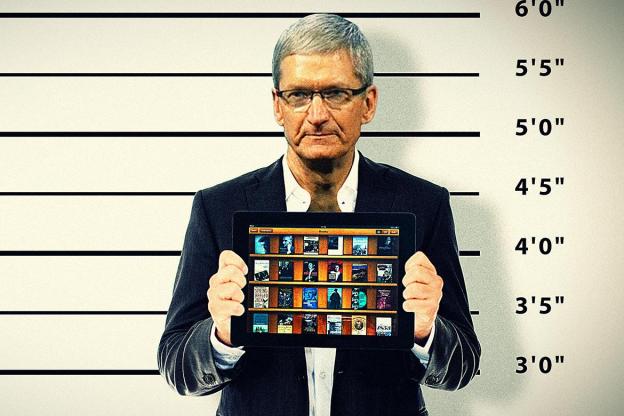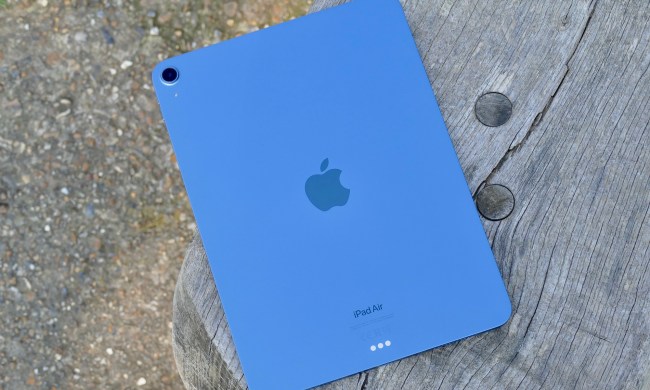
This past week a judge finally ruled on the e-books price fixing case the U.S. Department of Justice brought against Apple. Though all the other parties involved – the five publishers Apple colluded with, according to the suit – settled long ago, Apple chose to fight to the bitter end and plans to appeal the ruling. The Cupertino company maintains it did nothing wrong. Both big and small e-book sellers largely disagree. This fight is not just about the price of e-books, but about how Apple helped major publishers fundamentally change their relationship to booksellers and what that meant for everyone, book buyers and book authors included.
A little history
In 2010, a huge number of books disappeared from Amazon’s virtual shelves with no explanation. It quickly came to light that the missing books were all published by Macmillan and its imprints, and the reason for the disappearance was that Amazon and the publisher could not agree on the price of e-books. Removing the books was a very public way for Amazon to express displeasure at what Macmillan and other publishers were trying to do, and the wrangling between the two entities played out in public. Macmillan portrayed Amazon as the great evil and Amazon portrayed itself as a champion of the people; it was looking out for customers, defending them against a greedy conglomerate. Meanwhile, Macmillan authors were losing sales.
Amazon achieved e-book market dominance by selling books for lower than what it paid for them.
Amazon achieved market dominance by selling e-books for less than what it paid for them. Kindle owners came to expect that a new novel-length e-book should cost $10. This bothered publishers, a lot. They did not want customers to consider $10 the “right” price for an e-book the same way they consider $0.99 the “right” price for a music track.
This is where Apple comes in.
Before the iPad launched Steve Jobs set out to woo publishers to the iBooks store that would launch with it. In order for iBooks to have a chance at success, it would need to compete with Amazon on price and Jobs was not willing to lose money on sales to make all e-books $10 or less. Apple encouraged publishers to switch to an Agency Model. Unlike the wholesale model, under the agency model publishers set the price of the e-book and sellers like Amazon and indie stores simply become agents through which customers buy the book. Booksellers still make money from the sale – but the amount is fixed. Price control remained with publishers (sort of).
There are many reasons for customers and booksellers to dislike the agency model, though that’s not the only reason the DOJ got involved. What the Department of Justice didn’t like was the price fixing. The big publishers made a side deal with Apple to ensure that books in iBooks would always have the lowest price. If publishers adjusted a price lower for one bookstore, they had to adjust the iBooks price, too. Other bookstores didn’t get that same deal. This kind of Most Favored Nation (MFN) clause isn’t a new thing with the agency model. But, according to the DOJ, the way it “protect[ed] Apple from having to compete on price at all, while still maintaining Apple’s 30 percent margin.”
Perception of Greed
Once the agency model took hold and iBooks became available, e-book prices went up, sometimes dramatically. But despite publishers’ efforts, the $10 price point had already settled in as the reasonable price for an e-book by many customers. Still, others thought even $10 was too high for a digital file that didn’t need to be printed, shipped, or warehoused. Those costs don’t represent the majority of what goes into making an e-book – aside from payments to the author there are still editing, design, marketing, and administrative costs as well – which is not always obvious to consumers. To many, it felt as if publishers were getting greedy and selling e-books for more than they really needed to make a reasonable profit.
Authors fought against the idea that e-books aren’t worth much simply because they are digital goods even while some agreed that the agency model wasn’t a net positive for them, either. Joe Konrath pointed out that “[w]ith the wholesale model, authors made more money per unit and sold more units. … With the agency model, authors made less money per unit, and sold fewer units” because prices were higher, thus discouraging buyers.
The big publishers made a side deal with Apple to ensure that books in iBooks would always have the lowest price.
Bookstores that dealt with publishers under the agency model found that, almost overnight, some of the tools they used to compete with bigger stores vanished. The special Apple price matching clause took away any ability for rival stores to offer discounts that Apple didn’t also benefit from. This included loyalty card discounts, one of the more important tools for bringing repeat customers back to a store. Any existing loyalty cards couldn’t be honored.
The culprit in that scenario isn’t the agency model itself, but Apple’s special clause. In the midst of the suit brought by the DOJ, the American Booksellers Association stated that the agency model is good for small bookstores because it doesn’t allow Amazon to undercut them, anymore. When the DOJ settled with the publishers, the agency model pretty much went away and e-book prices at Amazon went back down to the $10 or less for bestsellers. Eliminating the agency model proved good for big players, perhaps not so for indies.
Who is the real villain?
That is the same dilemma Apple faced with iBooks at launch. Like many indie stores, iBooks faced big losses because Amazon kept choosing to take a loss and majorly undercut them on price. Arguably, Apple could well afford to lose some money while building the iBooks brand; indie stores don’t have that luxury. But operating at a loss has never been Apple’s style. Instead, it changed the rules of the game.
Is it fair that Amazon used its domination of the market and deep pockets to sell e-books below cost? Maybe not, but it’s also capitalism at work. However you feel about Amazon, it’s working the system within the rules set by law. Apple used publisher fear and frustration to make its own entry into e-book selling easier. Is that fair? You could say it’s an example of creative and innovative disruption that was badly needed. The Department of Justice and at least one judge say it’s illegal.
And while Amazon, Apple, and the big publishers wrestle, indie booksellers, writers, and book lovers like us suffer the majority of the impact. When big companies fight, it’s the little guys who lose.


